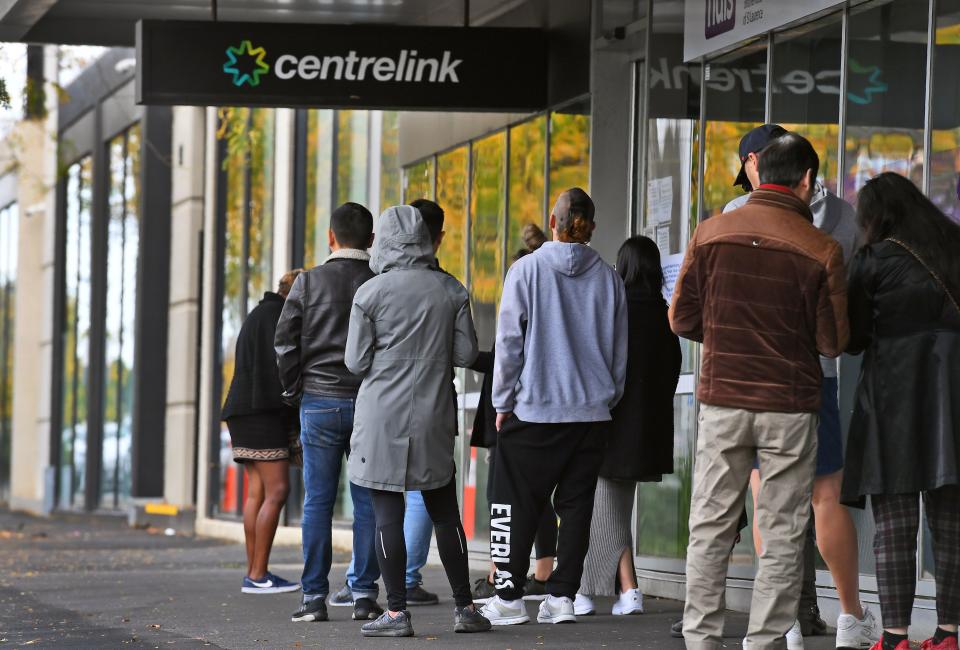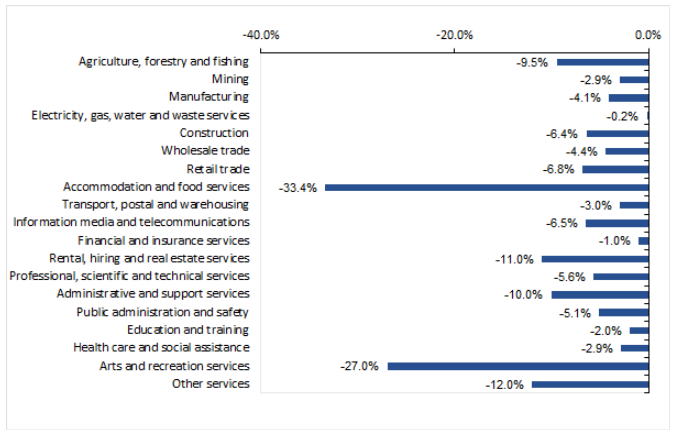ABS reveals horror coronavirus figure

Around 1 million Australians have been forced into unemployment in the weeks since the middle of March, but one sector has seen its workforce reduced to a fraction of what it was.
Also read: RBA makes May interest rate decision
Also read: How will we pay for coronavirus?
Also read: ‘Vicious cycle’: Coronavirus dents equality
Between the week ending 14 March and the week ending 18 April, employee jobs fell by 7.5 per cent, while total wages fell by 8.2 per cent, the latest ABS data has revealed.
But the accommodation and food services sector has been annihilated, with one third of jobs in that industry lost.
Around ~975,000 jobs in Australia have been lost since the middle of March. Accommodation and food services workers have been among the hardest hit #ausbiz #auspol pic.twitter.com/AB9DIqGMXo
— David Scutt (@Scutty) May 5, 2020
Sweeping social distancing rules have forced restaurants, cafes and bars to close while travel restrictions have also hit the accommodation and tourism sector.
“The industries which lost the most jobs continued to be accommodation and food services (-33.4 per cent) and arts and recreation services (-27.0 per cent),” head of labour statistics Bjorn Jarvis said.
“Job losses in accommodation and food services were greatest in South Australia (-39.7 per cent) and Victoria (-35.6 per cent).”

The data also shows that young workers aged 20-29 and those older than 70 employed in accommodation and food services were also the most affected, with the two groups losing 40.8 per cent and 43.7 per cent of jobs respectively.
Across all sectors, Victoria (-8.6 per cent) and Tasmania (-8.0 per cent) saw the highest number of job losses.
Women (-8.1 per cent) also lost more jobs than men (-6.2 per cent), although men’s overall wages (-8.9 per cent) fell higher than women’s (-7.0 per cent).
Is unemployment support enough?
The figures come amid heavy debate on the adequacy of JobSeeker payments.
The federal government essentially doubled the JobSeeker (formerly NewStart) payment to address the high number of Australian forced out of work due to coronavirus.
Now, advocates and experts are warning against a return to the former lower payment of around $40 a day.
The Senate Community Affairs References Committee has found the former level of payments was inadequate and forces many to “live in poverty”.
The Australian Council of Social Services (ACOSS) has also criticised the former payment of level and called for a permanent increase.
“It’s clear we need a permanent fix to our social safety net. Our income support system was cruel before this crisis began,” ACOSS CEO Dr Cassandra Goldie said.
“We can never go back to the brutality of trying to survive on $40 a day. We need a secure safety net that protects us all from poverty.”
New essential polling has found the majority (57 per cent ) of Australians agree, with this group believing JobSeeker shouldn’t return to $40 a day, while 15 per cent were undecided.
However, the federal government has flagged the current rate of JobSeeker payments will not continue beyond coronavirus.
“We put a Covid supplement in place for the period of the pandemic and that's what we've budgeted for and that's what our policy is,” Prime Minister Scott Morrison said.
Follow Yahoo Finance Australia on Facebook, Twitter, Instagram and LinkedIn.

 Yahoo Finance
Yahoo Finance 

